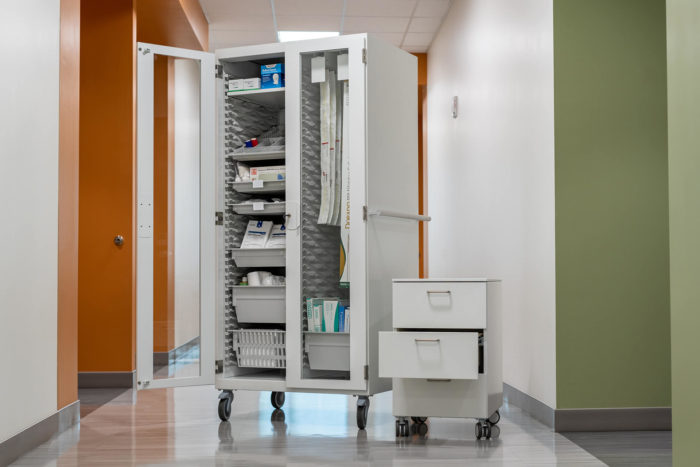Procedure cabinets are a vital piece of equipment in many healthcare settings. They allow for the storage of a wide range of essential equipment. Poorly designed or misused cabinets can present a safety hazard, but EVERHUTCH cabinets are constructed to offer the best protection for both equipment and patients.
Potential risks of a procedure cabinet
Some of the risks presented by a procedure cabinet are similar to other aspects of healthcare. For example, there is the ever-present risk of infection. Equipment that is not properly cleaned and sterilized is a danger to both patients and staff.
This emphasizes how the safety of procedure cabinets, and therefore patients, is about not just the cabinet itself but what is inside. Not only is some medical equipment fragile, but items such as syringes, scalpels and drugs also present an active safety risk in the wrong hands.
How to ensure patient safety?
EVERHUTCH has taken steps to protect against all these risks with its cabinets, therefore improving the safety of patients. Size, shape, materials and security measures all combine to create the safest and most effective product, capable of storing a wide range of equipment and looking after the needs of both patients and staff.
Cabinets are on swiveling casters to enable ease of movement and maneuverability in awkward spaces, so they can be transported to where they are most needed with minimal risk of injury. Once in place, the casters lock so the risk of the cabinets falling over or rolling across someone’s toes in minimized. Handles also help with maneuverability.
Keeping the cabinet clean and therefore controlling the risk of infection is relatively easy thanks to the use of materials such as stainless steel, which is also resilient enough to stand up to bangs and scrapes. Stainless steel is easily wiped and disinfected and will not corrode. Adjustable and removable shelves, drawers and containers are also easier to clean.
Security measures to protect dangerous equipment or substances can include different locking mechanisms, including a physical key, an electronic keypad or a combination of keypad and proximity card.
Using the best procedure cabinet is not just a decision driven by practicality. Ensuring the cabinets are sturdy and resilient, but can be moved with ease and that they have adequate infection control and security measures are some of the best ways to improve patient safety.

Comments are closed.